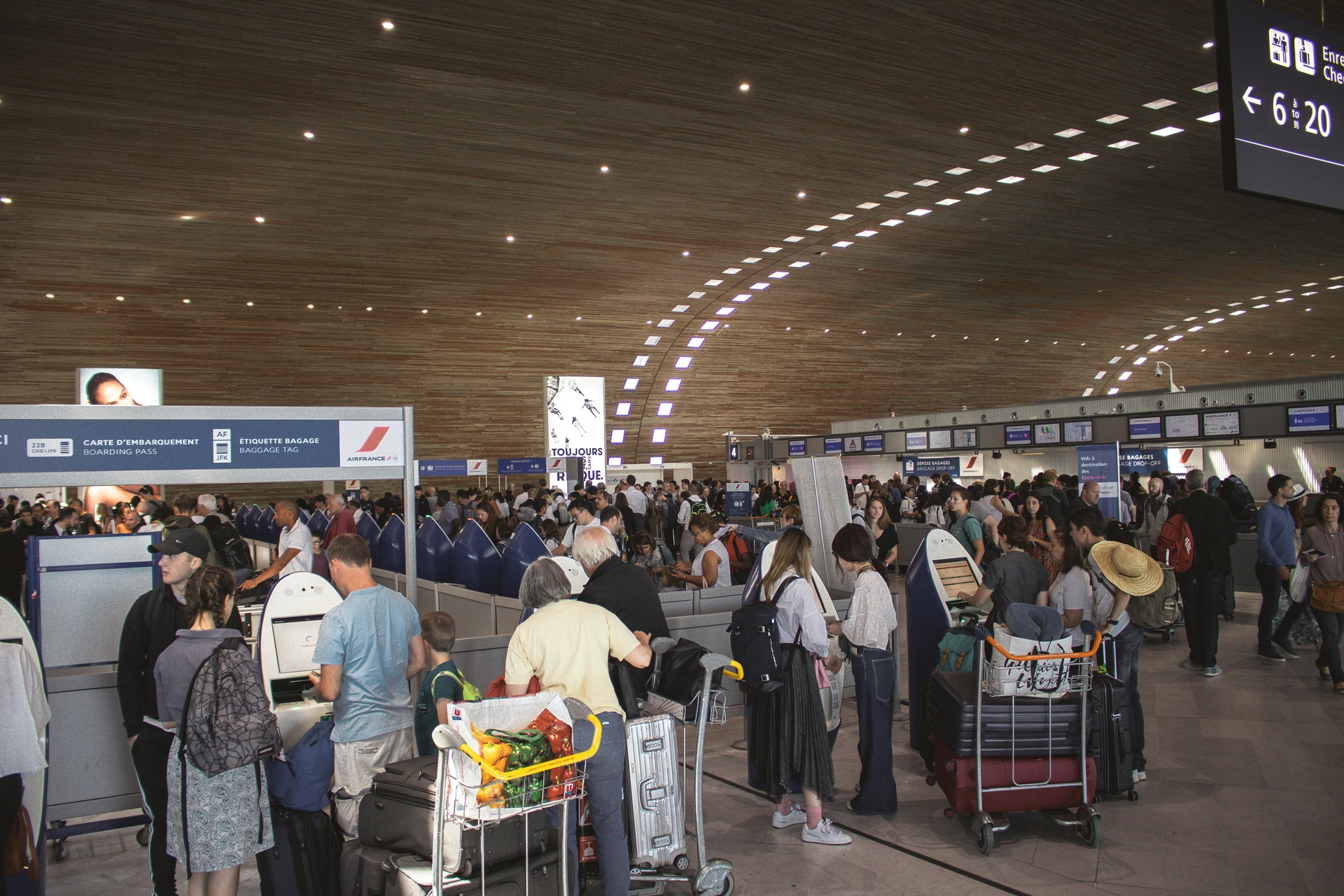
AeroGenie — Your Intelligent Copilot.
Why You Need to Be On Top of Fleet Health for Compliance Purposes
July 01, 2025
Predictive maintenance isn't optional anymore. Air fleets are using tools like CHIME, AVIATAR, and ePlaneAI to prevent delays, cut emissions, and keep planes flying safely and efficiently.
The compliance pressure behind predictive maintenance
Aviation maintenance used to be reactive: something breaks, it gets fixed. Then came scheduled maintenance, where components are replaced based on time or recommended manufacturer cycles, regardless of actual part condition. But in 2025, predictive maintenance has become the gold standard—not just for efficiency, but for compliance.
As aircraft fleets age and regulators raise the bar on safety, emissions, and operational transparency, the pressure to prove proactive maintenance planning is intense. Airlines and operators are expected to minimize unscheduled events, optimize fuel use, and produce auditable maintenance records that demonstrate regulatory alignment. The growing complexity of aircraft systems, combined with strict airworthiness directives from the FAA, EASA, and other global bodies, makes it virtually impossible to rely on traditional maintenance strategies alone (FAA).
Fleet health is as much a regulatory metric as it is a technical one. And predictive maintenance, powered by Aircraft Health Monitoring Systems (AHMS), delivers the real-time oversight and data trail needed to meet those evolving mandates (Boeing Global Services).
Global market analysts expect AHMS adoption to keep rising fast. According to MarketsandMarkets, the AHMS market is projected to reach $8.6 billion by 2028, growing at a compound annual growth rate (CAGR) of 6.5% from 2023 to 2028 (MarketsandMarkets).
What predictive maintenance actually means
Predictive maintenance goes beyond spotting wear and tear. It relies upon data to anticipate failures before they happen. In aviation, aircraft health monitoring systems track specific data points in real time to look for performance deviations, mechanical risks, and emerging failure patterns.
Most systems have two core components: the Airborne Health Monitoring Subsystem (AHMS) and the Ground Health Diagnostics Subsystem (GHMS). The AHMS collects in-flight data using strategically placed sensors that monitor turbine efficiency, vibration levels, gearbox conditions, and more. This data is then relayed to the GHMS on the ground, where advanced analytics interpret it for actionable insights (MarketsandMarkets).
Together, these systems support what’s often called condition-based maintenance (CBM). Here, CBM uses historical trends and real-time sensor readings to determine precisely when a part needs attention (IBM). No more guesswork or replacing a healthy part just because a clock ran out.
Emerging technologies make all of this possible. Wireless sensor networks collect high-frequency aircraft data without the weight or wiring burden of legacy systems. AI models can continuously validate whether a trend indicates deterioration or just a one-off anomaly. Diagnostic engines tie sensor readings back to specific maintenance actions, linking condition to cost.
This data-centric approach allows fleet managers to prioritize repairs based on risk and timing, rather than reacting to faults after they have grounded a flight.
From dashboard to decision: How AHMS enables smarter compliance
Data collection alone isn’t enough
It’s tempting to think of Aircraft Health Monitoring Systems as just fancy flight data recorders, but the real power of these systems lies in their interpretation of the numbers. Raw data alone is meaningless unless it can be turned into decisions that meet both operational and regulatory needs. That’s where diagnostic engines, AI algorithms, and predictive modeling come in.
The ground-based components of AHMS, such as Boeing’s Airplane Health Management (AHM) suite, analyze data transmitted via ACARS or SATCOM in near real time. Boeing’s AHM, for example, tracks over 2,000 airplane parameters, linking them to 100+ tailored maintenance messages. These alerts are ranked and scored to reflect urgency, enabling fleet managers to act before a minor fault becomes a delay, cancellation, or compliance risk (Boeing).
Lufthansa Technik’s AVIATAR system goes even further. It fuses condition monitoring and predictive analytics into a centralized dashboard, offering maintenance crews a unified view across both Airbus and Boeing fleets.
United Airlines, in a final example, partnered with AVIATAR to merge their 737 NG and A320 operations into a single predictive maintenance workflow, integrating their own maintenance logbook and OEM documentation for simplified compliance documentation (Luthfansa Technik).
These integrations keep planes safely in the air with the digital audit trails that regulators increasingly expect. The FAA, EASA, and other aviation authorities want to see that operators can detect, document, and resolve maintenance risks before they escalate. AHMS tools offer exactly that.
Real-time alerts that prevent compliance incidents
Airlines live and die by operational efficiency, but regulators care far more about traceability. An undetected fault that leads to an aborted takeoff or an unplanned diversion can trigger deep regulatory scrutiny, no matter how perfectly the MRO team responds afterward.
This degree of integrated planning helps airlines maintain regulatory compliance by minimizing deferred maintenance, improving MEL (Minimum Equipment List) management, and ensuring that rectification intervals are met. It also prevents cascading delays, so that one fault grounding an aircraft doesn’t ripple into five delayed flights and hundreds of diverted passengers.
Ultimately, real-time alerting and predictive maintenance are competitive, compliance assets. Airlines that fail to adopt them risk more than inefficiencies, including violations, fines, and grounded aircraft.
Beyond cost cavings: The compliance dividend
How AHMS supports MEL management and deferred defect control
Deferred maintenance is a reality of modern aviation. But every deferral, especially for items listed under the Minimum Equipment List (MEL), comes with a ticking clock. Miss that window, and you’re not just grounded—you’re out of compliance.
Aircraft Health Monitoring Systems help manage these deferrals more proactively. When a component is marked inoperative, AHMS tools can log it instantly, trigger reminders based on rectification intervals (like MEL categories B, C, or D), and even auto-generate maintenance tasks for timely follow-up. Boeing’s AHM platform, for instance, lets operators attach documents and notes to fault alerts, creating a clear paper trail of MEL decisions (Boeing).
Regulatory bodies like the FAA and EASA have tightened oversight on deferred items in recent years, especially for repeat defects. Airlines must use systems that accurately store data for trend analysis, showing their ability to recognize recurring issues and take appropriate response measures in time.
Proof of compliance in a world of digital oversight
Today’s regulators want proof that an issue was fixed, along with evidence that it was flagged, evaluated, and resolved on time. They also require confirmation that similar faults across the fleet are being tracked and mitigated. Here, AHMS can simplify both adherence to and validation of compliance.
Take Airbus’s Skywise Health Monitoring platform: it not only collects fault data, but Skywise correlates it with prior occurrences, logged actions, and real-time aircraft usage. This turns every alert into an audit-friendly event record, complete with timestamps, location data, sensor readouts, and technician follow-up (Airbus).
Similarly, GE Aviation’s FlightPulse gives pilots and operations teams a full feedback loop. If an engine parameter exceeds pre-set thresholds, AHMS logs the event, notifies maintenance, and enables an investigation. This brings transparency to all departments and establishes a digital record to satisfy both internal audits and external regulatory reviews (GE Aerospace).
This capability is increasingly critical. As ICAO and regional regulators push toward performance-based oversight (PBO), aviation companies must prove that their safety management systems are not just reactive but predictive (International Civial Aviation Organization). Thus, AHMS has become an insurance policy against non-compliance in an age of relentless digital scrutiny.
Operational wins: More than just staying airborne
Less AOG, more ROI
An aircraft on ground (AOG) even delays the flight and triggers a domino effect across company operations. Gate availability, crew scheduling, passenger connections, and even fuel contracts can be impacted by postponed or grounded flights.
AHMS helps airlines spot early-warning signs before they become AOG events. By continuously tracking system anomalies and trending data over time, these platforms can highlight "silent" degradations, or issues that haven’t yet triggered cockpit alerts but are statistically linked to future failures. According to Honeywell, proactive maintenance through AHMS has been shown to reduce unscheduled removals by up to 35% (Honeywell).
As another example, AVIATAR. in its partnership with United Airlines, was able to consolidate predictive alerts for over 500 aircraft—cutting unplanned maintenance delays and dramatically increasing first-time fix rates (Luthfansa Technik).
Fleet-wide visibility in a fragmented maintenance landscape
The bigger the fleet, the harder it is to spot the patterns that matter. Aircraft Health Monitoring Systems bring structure to what would otherwise be chaos, integrating data across aircraft types, geographies, and MRO providers.
Boeing’s Airplane Health Management system aggregates operational data across an entire fleet, giving operators a centralized dashboard to assess real-time aircraft condition, compare performance, and allocate maintenance resources more strategically (Boeing).
In multi-OEM fleets, systems like AVIATAR provide a unified interface for both Airbus and Boeing jets. Airlines normalizing data from disparate systems and linking them to work orders, maintenance logs, and flight schedules can avoid duplication and reduce administrative burden. And thanks to cloud architecture, this visibility extends to line stations, outstations, and beyond, enabling mobile crews to access the same insights from anywhere in the world.
In an era where airline profitability hinges on operational precision, AHMS can manage healthier fleets with more preventative care than damage repairs.
Ready to modernize your fleet health strategy? ePlaneAI helps operators turn raw aircraft data into real-time insights, so you can act before systems fail, slash AOG costs, and outpace competitors. Book a demo today and see how predictive maintenance becomes your operational superpower.
Aviation Maintenance Trends That May Gain Momentum in Uncertain Circumstances
Aircraft are staying in service longer, supply chains are a powder keg, and the tech is evolving overnight. Discover the maintenance trends gaining momentum and what they mean for operators trying to stay airborne and profitable.

October 2, 2025
Choosing the Right Aircraft Parts with Damage Tolerance Analysis
The future of aviation safety is all about the parts. Authentic, traceable parts bring optimal damage tolerance and performance to fleets for maximum safety and procurement efficiency.

September 30, 2025
How to Enter New Aviation Markets: The Complete Guide for Parts Suppliers
Breaking into new aviation markets? Learn how suppliers can analyze demand, manage PMA parts, and build airline trust. A complete guide for global growth.

September 25, 2025
5 Aviation Marketing Strategies You Should Use to Sell to Global Airlines
Airlines face shrinking margins and rising expectations. See how top strategies—dynamic offers, partnerships, personalization, and more—can close deals with global carriers.
